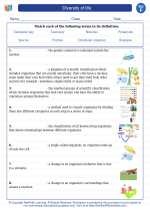Bone
Bones are the rigid organs that make up the skeletal system of vertebrates. They provide support and protection for the body, as well as serving as the anchor for muscles to produce movement. Additionally, bones store minerals such as calcium and phosphorus, and they contain bone marrow, where blood cells are produced.
Structure of Bone
Bones are composed of two types of tissue: compact bone and spongy bone. Compact bone is the dense, hard outer layer that provides strength, while spongy bone is a porous, honeycomb-like inner structure that contains bone marrow. The outer surface of bones is covered by a membrane called the periosteum, which contains blood vessels and nerves.
Bone Cells
There are three main types of bone cells:
- Osteoblasts: These cells are responsible for bone formation by secreting the matrix that eventually becomes mineralized.
- Osteocytes: Once the bone matrix is mineralized, some osteoblasts become trapped within it and become osteocytes, which help maintain the bone structure.
- Osteoclasts: These cells are involved in the breakdown and resorption of bone tissue, allowing for bone remodeling.
Bone Growth and Development
Bones grow and develop through a process called ossification, which can occur through two methods:
- Intramembranous ossification: This process occurs in flat bones, where bone tissue forms within a membrane.
- Endochondral ossification: This process occurs in long bones, where bone tissue forms within a cartilage model.
Common Bone Diseases
There are several diseases and conditions that can affect the bones, including:
- Osteoporosis: A condition characterized by a decrease in bone density, leading to an increased risk of fractures.
- Osteoarthritis: A degenerative joint disease that can affect the bones within a joint.
- Rickets: A condition caused by a deficiency of vitamin D, leading to weakened and softened bones in children.
Study Guide
When studying the topic of bones, consider the following key points:
- Identify the functions of bones in the body.
- Describe the structure and composition of bones.
- Explain the roles of osteoblasts, osteocytes, and osteoclasts in bone metabolism.
- Compare and contrast intramembranous and endochondral ossification.
- Discuss common bone diseases and their effects on the skeletal system.
Understanding the structure, function, and development of bones is crucial for comprehending the human skeletal system and its role in overall health and movement.
.◂Science Worksheets and Study Guides Sixth Grade. Diversity of life
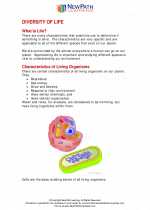
 Activity Lesson
Activity Lesson
 Worksheet/Answer key
Worksheet/Answer key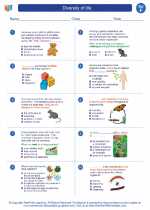
 Worksheet/Answer key
Worksheet/Answer key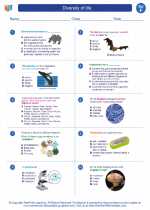
 Worksheet/Answer key
Worksheet/Answer key
 Vocabulary/Answer key
Vocabulary/Answer key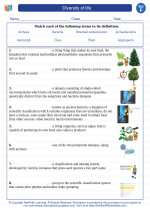
 Vocabulary/Answer key
Vocabulary/Answer key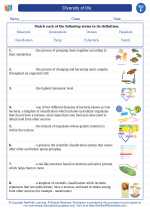
 Vocabulary/Answer key
Vocabulary/Answer key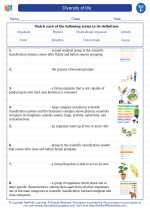
 Vocabulary/Answer key
Vocabulary/Answer key